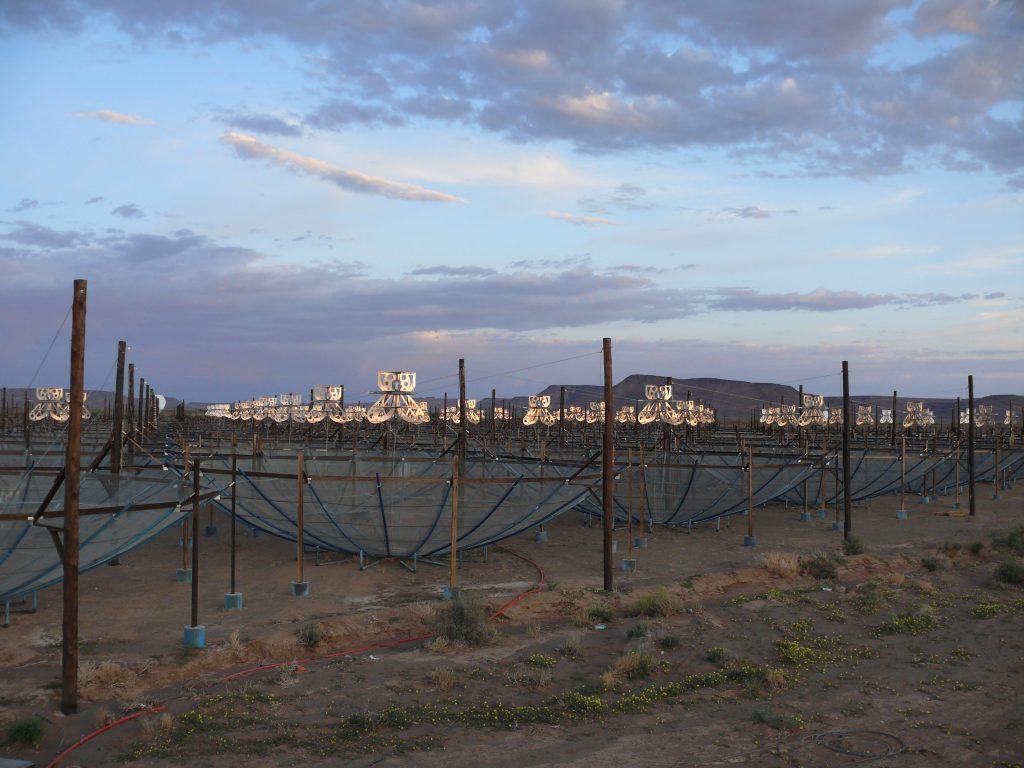21cm Cosmology
Though much has been inferred about formation of elements, stars, galaxies, black holes and all the other interesting bits, we have yet to observe much directly. It all happened when the universe was cold and dark with not much to see. However there might still be a few photons coming to us from this time. The Birth Epoch can be said to have begun when the universe was cool enough for the hot electrons and protons to form neutral hydrogen, releasing the cosmic microwave background (the CMB) which has become a cornerstone cosmological tool. The end of the era might be said to happen when new stars re-ionized the hydrogen. During this time, objects are scarce, faint, and obscured by gas. However, Hydrogen itself is potentially visible in the 21cm hyperfine transition. What can we see?

Cosmic timeline showing the formation of stars out of primordial Hydrogen and the epochs probed by modern instruments
Though the time period is short, it is a busy one. Theory suggests three notable events observable in the 21cm line: Dark Ages, Cosmic Dawn, and the Epoch of Reionization. One typically refers to lookback “redshift”, the amount of stretch experienced by a photon travelling to us. The physics at work in the dark ages is dictated by a cooling universe first experiencing gravitational collapse but still feeling strongly the effects of radiation or other high energy interactions. The cosmic dawn could still be dominated by fundamental physics but is generally thought to be the province of stellar radiation. This signal could potentially be the largest. Finally the end of the 21cm Era in the Epoch of Reionization is the epoch most widely sought and speculated about. Settling questions about reionization would impact almost every area of astronomy and cosmology in some way.

HERA
The Hydrogen Epoch of Reionization Array (HERA) is cosmology experiment to directly detect primordial hydrogen dating from the time of the first stars. HERA is a large radio interferometer located in the Karoo desert of South Africa. At ASU we are responsible for commissioning the telescope and analyzing data.

ECHO
The External Calibrator for Hydrogen Observatories (ECHO) is a drone-mounted calibration source used to map the response of instruments like HERA at the high precision necessary for cosmological observations.
Direct Imaging Correlator
E-field Parallel Imaging Correlator (EPIC) – Dense arrays are one way to minimize foreground contamination of the 21cm signal. Full correlation of dipole arrays are also the best way to image the large areas of the sky necessary to survey foregrounds. They also enable significant transient science. EPIC is an implimentation of a generalized Fast Fourier Transform Telescope that allows for antennas to be positioned arbitrarily and is an important step along the road towards fully correlated arrays with 10s of thousands elements at scalable costs.
For more see Adam Beardsley’s EPIC page
Long Wavelength Array
The Long Wavelength Array in Owens Valley is a low frequency array which will search for exoplanet auroral emission, gravitational wave counterparts, and a 21cm signature of the cosmic dawn. The array is currently being upgraded to make the telescope more broadly usable and to increase sensitivity. ASU is a partner in this upgrade with a focus on the cosmology project.
21cm reading for new students
- Public Level: Loeb 2011
- High level student level: Pritchard and Loeb, 2012
- The theory bible: Furlanetto, Oh, and Briggs, 2006
- Many more instrumentation papers by myself and collaborators listed on the HERA web site. See Deboer et al 2016 for a description of HERA.
Tutorials
- champ_imaging_tutorial – Updated 19 Feb 2019
- HERA Crash Course @ ASU Slide Deck
.